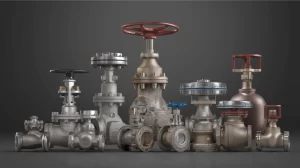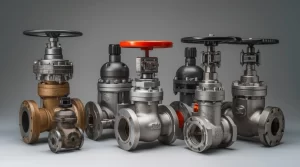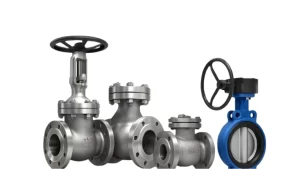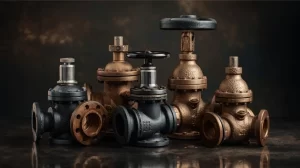Table of Contents
ToggleThe biggest difference between pneumatic actuated ball valves and electric ball valves is the power source: pneumatic valves use compressed air, while electric valves use electrical power.
This distinction affects their applications, performance, and suitability for different environments.
Pneumatic valves are preferred in hazardous areas due to safety and reliability, while electric valves offer precise control and are easier to integrate with automated systems.
What is the difference between electric and pneumatic valve actuators?
- The difference between electric and pneumatic valve actuators revolves around three aspects: power source, safety and reliability, and control and integration.
| Aspects | Pneumatic Actuators | Electric Actuators |
| Power Source | Use compressed air to generate motion. | Use electrical energy to drive the mechanism. |
| Safety and Reliability | Preferred in hazardous environments due to their intrinsic safety (no sparks). | Require additional safety measures in explosive atmospheres. |
| Control and Integration | Offer rapid response and are robust for heavy-duty applications. | Provide precise control and are easier to integrate with modern automation systems. |
What is a pneumatic actuator ball valve?
A pneumatic actuator ball valve is a type of valve that uses a pneumatic actuator to control the flow of fluids or gases.
The actuator converts compressed air into mechanical motion, which rotates the ball within the valve body to open or close the valve.
These valves are known for their durability, fast operation, and suitability for use in harsh or hazardous environments.
What is an electric ball valve?
An electric ball valve uses an electric motor to operate the valve mechanism.
The motor drives a gear system that rotates the ball within the valve to regulate fluid flow.
Electric ball valves are valued for their precise control, ease of integration into automated systems, and ability to be operated remotely.
Comparison Chart: Pneumatic Actuated Ball Valve vs Electric Ball Valve
| Aspect | Pneumatic Actuated Ball Valve | Electric Ball Valve |
| Power Source | Compressed air | Electricity |
| Working Principle | Pneumatic actuator converts air pressure into mechanical motion to rotate the ball | Electric motor drives gears to rotate the ball |
| Response Time | Rapid and suitable for quick action | Slower compared to pneumatic but offers precise control |
| Safety | Intrinsically safe for hazardous environments | Requires additional safety measures in explosive atmospheres |
| Control | Robust and reliable, but less precise | Precise control, easily integrated with automation systems |
| Maintenance | Requires regular checks for air leaks and actuator health | Requires less frequent maintenance, mostly electrical checks |
| Applications | Ideal for heavy-duty, hazardous, or remote locations | Best for applications needing precise control and automation |
| Advantages | Durable, fast operation, safe in hazardous areas | Precise, easy to automate, remote operation capability |
| Disadvantages | Requires air supply and maintenance of pneumatic system | Slower response time, potential for electrical issues |
Getting to Know Your Trusted Ball Valve Manufacturer: Gowin
Gowin, founded in 2007, is a leading valve manufacturer trusted by global industries in oil & gas, chemical, metallurgy, power, water supply, and energy.
Offering a wide range of valves, including ball, gate, globe, check, butterfly, plug, and needle valves, Gowin is renowned for delivering top-tier products and maintaining strong relationships with clients.
With ISO9001 & ISO14001 certifications and compliance with industry standards like API6D, TS, OHSAS45001, Fire Safety API607 & API6FA, Gowin ensures high-quality, reliable solutions for critical and everyday applications, solidifying its reputation for excellence and innovation in the industry.








